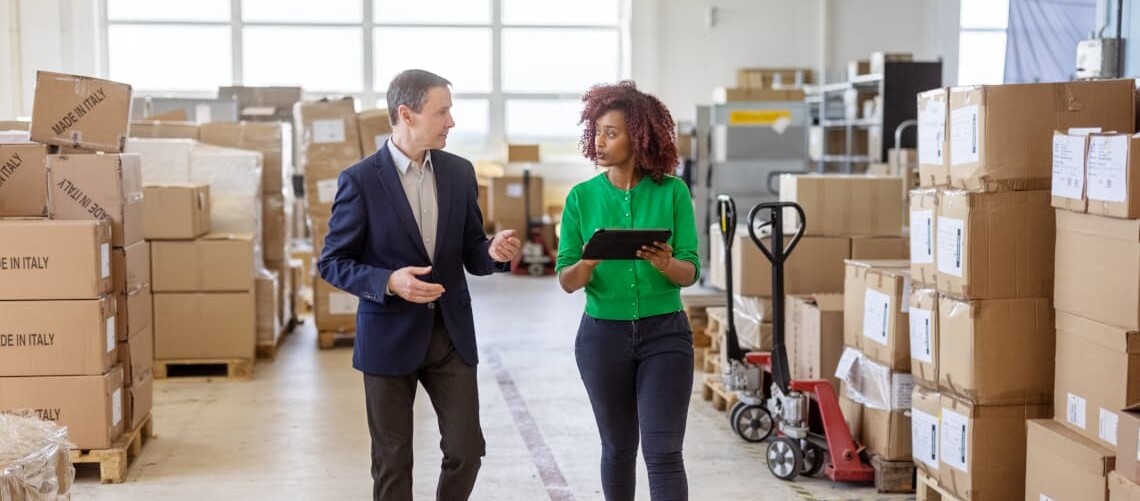Holiday Shopping Drives Supply Chain Pressures, but Can They Be Managed?
Increased demand, potential labor shortages, and more shopping activity than any other time of year for many industries create logistical hurdles that businesses must overcome. The stakes are especially high as customers expect faster shipping, real-time tracking, flexible delivery options, and sustainable practices, all without compromising reliability.
Traditionally, the end-of-year rush relied on careful planning and a heavily manual approach to ensure goods moved on time. However, the sheer scale of modern holiday shopping demands has made these methods insufficient for many industries. Rising expectations for same-day delivery and eco-friendly shipping are driving businesses to explore new solutions. Emerging technologies are beginning to reshape how companies manage seasonal spikes, setting new standards for efficiency and reliability.
How Innovations Like Drone Delivery Are Transforming Holiday Deadlines
Among the most impactful innovations is the use of delivery drones. These drones are revolutionizing last-mile logistics by bypassing traditional routes and reducing transit times, which benefits not only consumer deliveries but also B2B operations.
For businesses supplying goods to other companies, drones can enable faster fulfillment of critical orders, especially in urban and hard-to-reach areas. What has already started as a reality in the B2C sector, can become a more common one in the B2B as well.
Manufacturers, for example, can rely on drones to quickly transport components to assembly lines, avoiding production delays. Similarly, businesses operating in remote locations, such as mining or renewable energy, can receive equipment or tools faster than traditional logistics methods would allow. This capability is particularly beneficial for time-sensitive operations, where efficiency directly impacts revenue and customer satisfaction.
AI and machine learning are equally transformative, enabling businesses to predict demand fluctuations with precision. These tools optimize delivery routes, ensure proper inventory allocation, and streamline scheduling. This level of accuracy is particularly valuable for SMEs, allowing them to operate efficiently despite limited resources.
Another innovation gaining popularity is the use of smart lockers. These lockers offer a safe and convenient way to pick up their packages, easing the burden on delivery systems and simplifying last-mile delivery. This also helps with sustainability efforts by reducing the number of delivery trips needed.

Gamification and Blockchain in End-of-Year Shopping
Building on efficiencies introduced by AI and drone delivery, gamification is emerging as a strategic tool in streamlining end-of-year logistics.
Gamification integrates game-like elements into business operations, offering incentives for stakeholders, such as employees, delivery partners, and even end-customers, to engage more efficiently with logistics systems. For businesses, this means not only smoother operations but also opportunities to enhance brand loyalty and foster eco-conscious practices.
For instance, logistics providers can implement reward systems for delivery partners who choose cost-effective or sustainable options, such as consolidating shipments or utilizing smart locker networks. Retailers can also benefit by offering B2B client's access to loyalty programs or dynamic discounts tied to timely order management or eco-friendly fulfillment options. These strategies improve operational efficiency and drive long-term partnerships.
Blockchain technology further supports holiday logistics by providing real-time, secure, and transparent tracking across the supply chain. For businesses, this means better accountability, improved traceability for regulatory compliance, and enhanced collaboration with partners. Blockchain can ensure that B2B clients have full visibility into the journey of goods, from production to final delivery, fostering trust and reducing disputes.
Together, gamification and blockchain address critical logistical challenges while aligning with the increasing demand for sustainable and responsible business practices. Initiatives such as eco-friendly packaging, carbon-neutral shipping, and incentivized delivery programs are transforming how businesses manage holiday operations, setting new standards for efficiency and environmental responsibility in the B2B sector.
Delivering a Greener Festive Season with Sustainable Logistics
Sustainability is becoming a crucial element of holiday logistics as businesses align their operations with customer expectations for eco-conscious practices. One key area of focus is eco-friendly packaging, including innovations in gift wrapping paper. Many companies are now offering recyclable, biodegradable, or reusable wrapping materials to reduce the waste generated during the holiday season.
Another innovation lies in optimized delivery routes, enabled by advanced software that minimizes fuel consumption and reduces emissions. By analyzing real-time traffic data and delivery patterns, businesses can ensure faster and more sustainable deliveries, cutting down on unnecessary miles and fuel use.
Carbon-neutral shipping is also gaining momentum, with businesses integrating carbon offset programs into their logistics operations. This includes investing in renewable energy projects or forest restoration to balance emissions generated during deliveries.
As these strategies expand, technologies like drones, which are already reshaping logistics, could further contribute to sustainability goals by reducing reliance on traditional delivery methods that consume more fuel.
Faster Than Drone Delivery: What’s Next for Holiday Shopping
Picture delivery hubs powered by autonomous robots, packaging materials that biodegrade seamlessly within days, or predictive systems so advanced they can reroute operations in real time to adapt to sudden demand shifts. These innovations are more than just concepts; they are actively being explored as the next steps in revolutionizing how goods move during the busiest season of the year.
As businesses explore the potential of these advancements, they are setting the stage for entirely new possibilities. These innovations challenge the limits of traditional supply chain practices and invite fresh perspectives on efficiency, sustainability, and customer satisfaction. How these technologies will integrate and transform the shopping experience remains an open question—one that promises to keep evolving with each holiday season.

